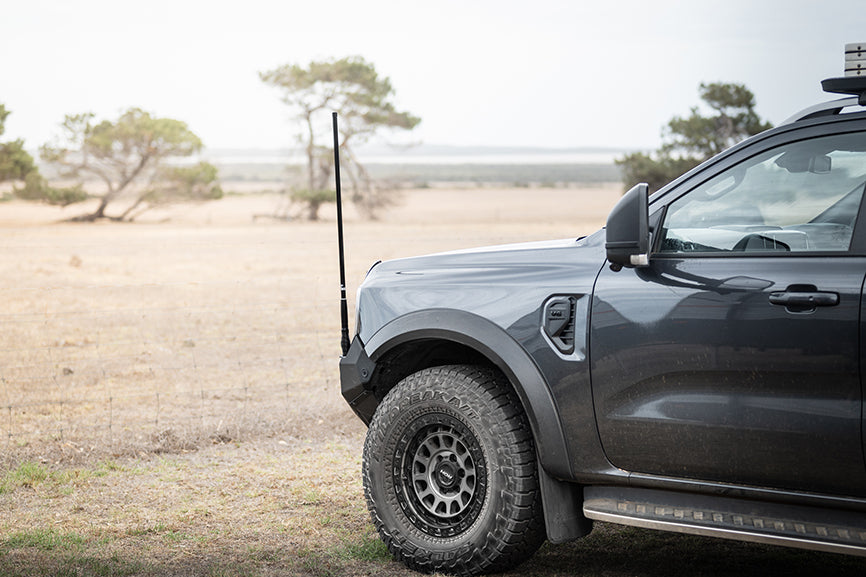
How to Choose the Right Mobile Antenna for Your Car
|
|
Time to read 3 min
|
|
Time to read 3 min
In today’s connected world, having a reliable mobile signal is crucial, especially when you’re on the road. Whether you’re travelling through rural areas, navigating city streets, or simply enjoying a road trip, a good mobile antenna can make a significant difference in maintaining strong and consistent connectivity. But with so many options available, how do you choose the right mobile antenna for your car? Here’s a comprehensive guide to help you make an informed decision.
Before diving into the specifics, it’s important to assess your needs. Ask yourself:
What type of areas do you frequently travel to? Urban, suburban, rural, or a mix?
Do you need an antenna for voice calls, data, or both?
Are you looking for a permanent installation or a temporary, portable solution?
Knowing your requirements will help narrow down your choices.
There are several types of mobile antennas, each designed for specific purposes:
These antennas receive signals from all directions. They are ideal for urban or suburban areas where the signal comes from multiple directions. They’re easy to install and don’t require precise aiming. This makes them a great option if you need to boost your mobile phone signal in various environments.
Directional antennas focus on signals from a specific direction. They are perfect for rural or remote areas where the signal comes from a known direction. They offer higher gains but require careful positioning. If you're looking to improve reception booster in remote areas, directional antennas might be the right choice.
These antennas are designed for easy installation and removal. They are great for temporary setups and rental vehicles. A portable phone signal booster can be a convenient solution if you frequently switch vehicles or need a flexible option.
Antenna gain, measured in dBi, indicates how much an antenna can boost the signal. Higher gain means stronger signal amplification, but it also narrows the beam width. Choose an antenna with a gain appropriate for your environment. For urban areas, a lower gain (2-5 dBi) might suffice, while rural areas might benefit from higher gain (8-12 dBi).
Ensure the antenna supports the frequency bands used by your mobile carrier. Most modern antennas support multiple bands (e.g., 700 MHz to 2700 MHz), covering a wide range of networks. This ensures compatibility with various mobile phone aerial boosters.
The location of the antenna on your vehicle can significantly impact performance. The roof is typically the best place as it offers a clear line of sight in all directions. For bullbar antennas, ensure they are mounted as high as possible. An aerial on car roofs often provides the best signal reception.
Ensure the cable length is sufficient to reach from the mounting location to your mobile device or router without excessive slack, which can cause signal loss.
Consider antennas designed to withstand harsh weather conditions, especially if you frequently travel in extreme environments. Durable antennas ensure consistent performance even in challenging conditions.
Make sure the antenna is compatible with your mobile device or router. Some antennas require specific connectors or adaptors, so check the specifications before purchasing. Telstra signal boosters, for instance, need to match the specific requirements of your carrier and device.
Some antennas come with built-in amplifiers to boost the signal further. These can be especially useful in areas with feeble signals, ensuring you get the best performance from your mobile phone aerial booster.
If you need to connect multiple devices, look for antennas designed to distribute the signal to several devices simultaneously. This feature is beneficial for families or workgroups travelling together.
Do some research on reputable brands and read customer reviews. Brands with a good track record are more likely to provide reliable products and customer support. Trusted brands in phone signal boosters can offer peace of mind and reliable performance.
Choosing the right mobile antenna for your car can enhance your connectivity on the road, ensuring you stay connected no matter where your travels take you. By understanding your needs, considering the type of antenna, and paying attention to key features like gain, frequency range, and installation requirements, you can select an antenna that meets your requirements and provides reliable performance.
Whether you’re navigating through remote areas or simply looking for a stronger signal in urban environments, Strike offers a variety of high-quality mobile antennas to suit different needs. Strike antennas, like the Strike B3 7dBi Heavy Duty Bullbar Mount Antenna, are designed to provide robust performance in various conditions, support a wide frequency range, and are compatible with most mobile carriers. Additionally, they are built to withstand harsh weather conditions.
With Strike’s wide range of antennas, you’re sure to find the perfect solution to keep you connected on the road. Safe travels and happy connecting!